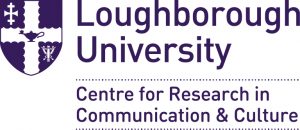
Dr Vincent Campbell
Senior Lecturer in the Department of Media and Communication at the University of Leicester.
Email: vpc2@le.ac.uk

Section 5: Campaign and Political Communication
- Why facts did matter in the campaign
- Less a soap opera, more a fantasy drama?
- The rhetoric of the EU Referendum campaign
- A (very) brief period of Habermasian bliss
- The toxicity of discourse: reflections on UK political culture following the EU Referendum
- Britishness and Brexit
- Neither tackling lies nor making the case: the Remain side
- Break-point for Brexit? How UKIP’s image of ‘hate’ set race discourse reeling back decades
- Interaction and ‘the floor’ in the televised debates of the EU referendum campaign
- Comedy clubs offered a better quality of debate than the political stage
- ‘Project Art’ versus ‘Project Fear’: the art establishment against Brexit
- Notes for editors: what the campaign press releases tell us about Vote Leave and Britain
One feature of the British political and media landscapes to have remained pretty much unchanged from the time of the first UK referendum on Europe in 1975 was the system for allocations of broadcast time on television. An outright ban on paid-for political advertising in broadcast media, with its origins in the earliest structures of the public service broadcasting monopoly of the BBC, has remained with surprisingly little change to the present day. In 1975 there were still only three television channels (BBC 1, BBC2 and ITV), only the last of which carried any paid-for advertising at all, and whilst the trickle of new channels in the 1980s and 1990s via satellite and cable turned into a flood since the 2000s with digital, and now online streaming television services, the system of allocated television broadcasts has remained pretty static, and in the view of one recent review is seen as still ‘fit for purpose’ as well as being consonant with European law, premised mainly on the likely huge cost of shifting to a paid advertising approach, and the potential disadvantages that might bring to political parties. In General Elections, where they are called Party Election Broadcasts (PEBs), the focus of allocated broadcasts has changed as television coverage has shifted from only reporting results in the early 1950s to near saturation coverage today. PEBs have become both an important site of mass audience reach for party messages, but also opportunities for media agenda setting through effective and memorably composition of the handful of PEBs the parties receive such as “Kinnock the Movie” in 1987, “Jennifer’s Ear” in 1992 or the Green Party’s “Change the Tune” from last year’s General Election.
Vote Leave… offer(ed RCB) compilations of shorter video sequences clumsily run together suggesting, perhaps, much more of a focus on video sequences designed for social media platforms where short, pithy videos in general are much more prevalent than traditional PEBs.
PEBs, then, occupy a role that has evolved over time within conventional electoral contexts, though this is starting to change with the increasing use of social media platforms by political parties for video content- such as dedicate YouTube channels for instance. Referendum Campaign Broadcasts (RCBs), on the other hand, do not have any of this kind of routine, and the approaches of the two official campaign groups reveal the problem of how to utilise a mid-20th century approach in a 21st century landscape.
The Stronger IN RCBs definitely took the approach of seeing them as traditional PEBs in terms of style, content and format. They produced two RCBs that were each shown twice during the campaign. Their first RCB, shown on May 24th, offered what turned out to be a rare example in the campaign of an attempt at a predominantly positive message, with a single filmed piece showing scene after scene of happy workers, families, doctors and particularly children, focusing on 14 month-old “Sam” and the opportunities for the future the EU would bring. Apart from a BBC article that described it as ‘cutesy and soft focus’ the ad didn’t dent the already predominantly negative and attacking agenda of the campaign in any notable manner. Their second RCB also followed a very conventional PEB format- the talking head format, with a series of prominent figures from Alan Sugar to Stephen Hawking offering soundbites of why the EU was good for all sorts of reasons- again not seeming to impact on media agendas in any way.
Vote Leave went for a very different approach, offering effectively compilations of shorter video sequences clumsily run together, suggesting perhaps, much more of a focus on video sequences designed for social media platforms, where short, pithy videos in general are much more prevalent, than traditional PEBs. The BBC’s one article on Vote Leave RCBs focused on what they saw as a ‘clever’ filmed sequence, used in all five of their slots- a short split-screen film accompanied only by music, showing the difference between an old lady’s experience of the NHS inside the EU- queues, waiting, not getting treated- to Leave’s vision of outside the EU- empty waiting rooms, immediate service, and being cured. This film was regularly topped and tailed by other short segments, on Cameron’s comments on Turkey, and claims about possible new EU member states’ pressure on the NHS using maps. The only major variation to this combination was the May 31st RCB which had two ordinary “blokes in the pub” making sly digs about Turkey and MEPs wages whilst promoting the Leave campaign’s £50 million competition linked to the Euro ’16 football championship.
Neither side’s RCBs generated more than a cursory mention in other news media, and then only by the BBC, so their impact on the campaign itself is likely to have been minimal. The impact of the campaign on the future of the party allocation system, on the other hand, may be one of the unforeseen longer consequences for political campaigning in the UK.

Stronger In RCB
Vote Leave RCB


